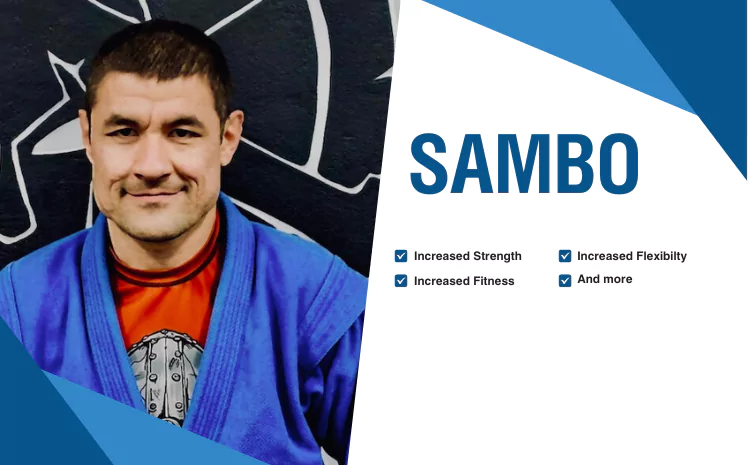Sambo, short for “SAMozashchita Bez Oruzhiya,” translates to “self-defense without weapons” in English. This dynamic martial art, originating in Russia during the early 1920s, blends elements of judo and wrestling, making it a versatile and effective combat system. In this article, we delve into the origins, techniques, training, and benefits of Sambo, shedding light on its growing popularity in the global martial arts community.
Origins of Sambo: A Fusion of Styles
Sambo was born out of a desire to create an effective martial art that could be readily applied in both sport and self-defense. Developed by the Soviet Red Army, Sambo integrated techniques from traditional Russian folk wrestling, judo, and various international wrestling styles. Its inception was rooted in the need for soldiers to possess versatile combat skills while unarmed.
Key Techniques and Principles
Sambo encompasses a wide range of techniques, including throws, joint locks, pins, and submission holds. Practitioners learn to leverage an opponent’s movements and momentum, using them to their advantage. The art emphasizes efficiency and control, enabling smaller individuals to overcome larger adversaries through proper technique and leverage.
Training Regimen: Building Strength and Agility
Training in Sambo involves a combination of strength and conditioning exercises, technical drills, and sparring sessions. The regimen focuses on enhancing cardiovascular fitness, explosive power, and agility. Cross-training with other disciplines is also common, as it broadens a practitioner’s skill set and adaptability.
The Competitive Arena: Sport vs. Combat Sambo
Sambo is practiced in two main forms: Sport Sambo and Combat Sambo. Sport Sambo emphasizes throws and ground control, with the goal of achieving a clean throw or pin for victory. Combat Sambo, on the other hand, introduces striking techniques and allows for a broader range of submissions, catering to both sport and real-world self-defense scenarios.
Health and Fitness Benefits
Engaging in Sambo provides a multitude of health benefits. The rigorous training regimen improves cardiovascular health, muscular strength, and flexibility. Moreover, the mental discipline required enhances focus, stress management, and overall mental well-being.
Sambo for Self-Defense: Real-World Applications
Beyond the sporting aspect, Sambo equips individuals with practical self-defense skills. Its techniques are designed to subdue an opponent swiftly and efficiently, making it an ideal option for real-world confrontations where weapons aren’t involved.
Sambo vs. Other Martial Arts: What Sets It Apart
Sambo stands out due to its holistic approach, blending elements of various martial arts into a cohesive system. Unlike some traditional martial arts that focus solely on striking or grappling, Sambo provides a well-rounded skill set that covers all ranges of combat.
Sambo for All Ages: Inclusivity and Adaptability
One of the remarkable features of Sambo is its adaptability to different age groups. Children, adults, and seniors can all benefit from its training, fostering a sense of community and mutual respect among practitioners of all generations.
Mental Discipline: The Psychological Aspect of Sambo
Sambo not only hones physical prowess but also cultivates mental toughness. Practitioners learn to overcome challenges, adapt to unpredictable situations, and stay composed under pressure—a skill set applicable to both the mat and everyday life.
Prominent Sambo Practitioners
Throughout its history, Sambo has produced legendary practitioners who have showcased the art’s effectiveness. Names like Fedor Emelianenko and Khabib Nurmagomedov have demonstrated the prowess of Sambo on the international stage of mixed martial arts.
Gearing Up: Sambo Equipment and Attire
Sambo practitioners typically wear a jacket-like uniform known as a “kurtka,” which provides grips for throws and grappling. The absence of a belt signifies the focus on practical techniques over rank or hierarchy.
The Global Spread of Sambo
From its Russian origins, Sambo has gained traction worldwide, with practitioners and organizations promoting its values and techniques. International competitions and workshops further contribute to its global recognition.
Cultivating Respect and Sportsmanship
Respect and sportsmanship are integral to the practice of Sambo. Practitioners adhere to a code of ethics that promotes fairness, integrity, and mutual respect, both inside and outside the training hall.
The Future of Sambo: Trends and Innovations
As martial arts continue to evolve, Sambo adapts by incorporating modern training methods and innovative techniques. Its focus on practicality ensures its relevance in an ever-changing combat landscape.
Preserving Tradition: The Essence of Sambo
While embracing innovation, Sambo enthusiasts remain committed to preserving the core principles and techniques that define the art. This dedication ensures that future generations will continue to benefit from its rich history and effective training methods.
Conclusion
Sambo’s journey from a Soviet military training method to a global martial art exemplifies its effectiveness and adaptability. With its focus on practical techniques, mental resilience, and inclusive community, Sambo stands as a testament to the enduring power of martial arts to shape both individuals and societies.

Mark Thompson, a seasoned pest controller, is renowned for his expertise in keeping homes and businesses free from unwanted intruders. With a passion for environmental sustainability and a deep understanding of pest behavior, Mark has become a trusted authority in the industry.
